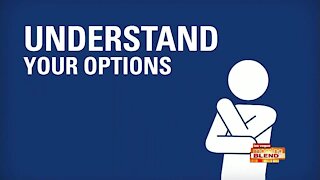What You Need to Know About MBD & Vit D3 Dangers
In a little more than 30 min, you'll learn more about what MBD actually is and what to do about it, than you'll learn anywhere outside of veterinary school. And you'd spend a lot more time web searching it, reading websites, or reading through other people's posts on a forum than simply watching this video will take.
This talk is not only applicable to all reptile keepers, but those who keep birds and other exotics or wildlife, such as opossums, skunks, raccoons, etc who also commonly suffer from rickets or MBD.
There is a specific way to address possible MBD, preferably starting with blood labs with chemistries to determine the levels of Ca & P, as well as PTH in the blood. PTH acts to resorb Ca. from bone and increases elimination of P in the urine, but hyperphosphatemia is often found in these cases and should be addressed with phosphate binders before giving boluses of Ca. supplementation to avoid dystrophic calcification. Phosphate binders should also be used with strict caution in emaciated animals to avoid "re-feeding syndrome", which is a hypophosphatemia condition which can cause death if P binders are overdosed and P becomes excessively depleted. Calcitonin may also be necessary to counteract the effects of elevated PTH. Care should be taken not to rush into giving Ca or D3 supplements without addressing hyperphosphatemia otherwise secondary hyper para-thyroidism can become tertiary hyper para-thyroidism.
NOTE: @13:45 It should be "2000 IU/Kg" rather than "2000 mg/Kg". And the "Treatment" part of my discussion is intended for addressing under clinical advisement by veterinarians or by an experienced rehabilitator, using the appropriate formulary guided dosing for P binders, calcitonin, etc. and after establishment of the serum lab values.
Find me on MeWe: https://mewe.com/p/reptilerescuerehabilitation
#metabolic bone disease #MBD #wildlife rehabilitation #animal rescue #reptile
-
 10:20
10:20
Reptile Rescue
7 months ago $0.02 earned𝓑𝓮𝓵𝓵𝓪'𝓼 𝓢𝓪𝓭 𝓢𝓽𝓸𝓻𝔂 - 𝓦𝓲𝓬𝓱𝓲𝓽𝓪 𝓕𝓪𝓵𝓵𝓼 𝓡𝓮𝓹𝓽𝓲𝓵𝓮 𝓡𝓮𝓼𝓬𝓾𝓮
48 -
 6:33
6:33
KTNV
3 years agoWhat You Need to Know About Digital Marketing
393 -
 35:30
35:30
WMAR
3 years agoVaccinating Maryland: What you need to know about the vaccines
138 -
 1:38
1:38
KJRH
3 years agoIcy water dangers: What you need to know to stay safe
7 -
 2:49
2:49
KTNV
3 years agoWhat You Need to Know About Medicare Annual Enrollment
80 -
 4:54
4:54
KNXV
3 years agoWhat you need to know about NextGen TV
44 -
 2:21
2:21
KERO
3 years agoWhat you need to know about Kern's U.S. Congressional races
114 -
 4:28
4:28
KTNV
3 years agoWhat You Need to Know about Prostate Cancer
6521 -
 7:05
7:05
samaranatha
3 years ago $0.03 earnedYou need to know this about the V
2292 -
 2:32
2:32
KJRH
3 years agoWhat you need to know about in person early voting
1271